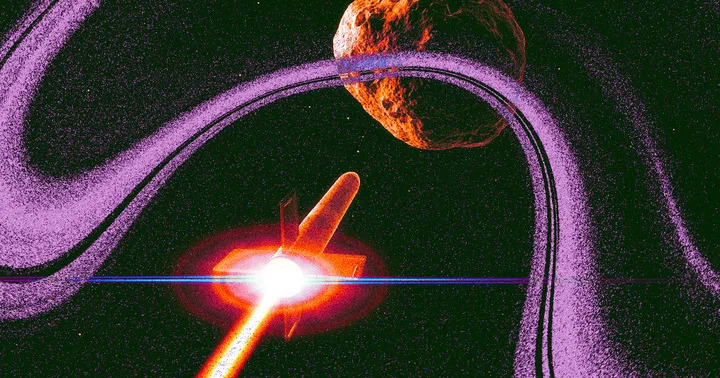Noor Al-Sibai
Sat, April 20, 2024

Full Nelson
NASA's administrator is once again making outrageous claims about China's space capabilities — and in the process, fueling the off-world rivalry between the two.
"We believe that a lot of [China's] so-called civilian space program is a military program," Administrator Bill Nelson said during remarks on Capitol Hill this week, per The Guardian. "And I think, in effect, we are in a race."
The comments, as the website notes, came during a hearing before the House Appropriations Committee — which means that Nelson was making them while asking for money for NASA, which has requested a whopping $25.384 billion for its 2025 funding.
"China has made extraordinary strides, especially in the last 10 years," Nelson continued, "but they are very, very secretive."
Big Talk
It's unclear from the reporting about the administrator's comments what evidence his claims are riding on. This is not, as we mentioned, the first time Nelson has made such bold accusations about our sometimes-ally.
Sworn in in May 2021, Nelson has for much of his tenure warned that China could usurp America's space advantage at any moment — and has used similarly bold claims to demonstrate that point.
Just a year into the job — and during another House Appropriations Committee hearing — the administrator straight-up accused China of stealing American spacecraft designs.
"Yeah, they're pretty good at stealing," Nelson told the subcommittee in May 2022, "and I think that's incumbent upon us to take cybersecurity very, very seriously."
Just a few months later, he claimed in an interview with a random German newspaper that China wants to "steal" the Moon as well, which prompted a response from the rival nation.
"The US side has constantly constructed a smear campaign against China's normal and reasonable outer space endeavors," Chinese foreign ministry spokesperson Zhao Lijian said in a press statement, "and China firmly opposes such irresponsible remarks."
Moon Money
While there certainly is no love lost between Nelson and his Chinese counterparts, the incendiary discourse between these space race rivals generally seems to originate on the American side.
Last fall, Nelson again claimed that China plans to hoard lunar resources for itself, which would go against the United Nations' binding space treaty of 1967 — and in his more recent remarks, he reiterated those remarks while begging for more money.
"The latest date they've said they're going to land [on the Moon] is 2030, but that keeps moving up," Nelson told Congress, per transcription from Sky News. "It is incumbent on us to get there first and to utilize our research efforts for peaceful purposes."
At this point, the lengthy list of receipts of this sort of recurrent rhetoric coming from the top of NASA does make one wonder: is China on the offensive, or is America?
More on NASA: NASA Admits Space Station Junk Crashed Through Man's Roof
Ashley Strickland, CNN
Fri, 19 April 2024
Observations from the European Space Agency’s Cheops space telescope, or Characterising ExOplanet Satellite, detected a “glory effect” on WASP-76b, an ultra-hot exoplanet 637 light-years from Earth.
Often seen on Earth, the effect consists of concentric, colorful rings of light, and it occurs when light reflects off clouds made of a uniform substance.
Beyond Earth, the glory effect had only been seen on Venus until Cheops and other missions picked up an incredibly faint signal suggesting it occurs in the atmosphere of the hellishly hot WASP-76b. Based on the signal detected by Cheops, astronomers believe the atmospheric phenomenon is directly facing Earth.
Researchers reported details of the observation April 5 in the journal Astronomy & Astrophysics.
“There’s a reason no glory has been seen before outside our Solar System — it requires very peculiar conditions,” said lead study author Olivier Demangeon, an astronomer at the Institute of Astrophysics and Space Sciences in Portugal, in a statement. “First, you need atmospheric particles that are close-to-perfectly spherical, completely uniform and stable enough to be observed over a long time. The planet’s nearby star needs to shine directly at it, with the observer — here Cheops — at just the right orientation.”
A wild, scorching planet
WASP-76b has intrigued astronomers ever since its discovery in 2013.
The exoplanet closely orbits its host star, and the intense heat and radiation received from that sun-like star — more than 4,000 times the amount of radiation that Earth gets from our sun — has caused WASP-76b to puff up, making it nearly double the size of Jupiter, the largest planet in our solar system.

A simulated view shows a glory as it may appear on Venus (left) and Earth.
The planet is tidally locked to its star, meaning that one side, known as the dayside, always faces the star, while the other face of the planet is in permanent night.
The dayside of WASP-76B reaches scorching temperatures of 4,352 degrees Fahrenheit (2,400 degrees Celsius). Elements that would typically form rocks on Earth melt and evaporate on the dayside before condensing and creating clouds that release molten iron rain on the night side.
Astronomers decided to focus a whole host of observatories, including Cheops, the Hubble Space Telescope, the now-retired Spitzer Space Telescope and NASA’s planet-hunting TESS mission, to study what appeared to be an imbalance of light that occurred as WASP-76b orbited in front of its host star.
Combined data from Cheops and TESS, or the Transiting Exoplanet Survey Satellite, hinted that the anomaly might be due to something intriguing occurring in the atmosphere above the dayside.
Cheops captured data from WASP-76b as the planet passed in front of its star, making 23 observations over three years.
When astronomers looked at the data, they noticed an unusual increase in light coming from the eastern “terminator” on the planet, or the boundary light between the day and night sides. Meanwhile, less light was released from the western terminator.
“This is the first time that such a sharp change has been detected in the brightness of an exoplanet, its ‘phase curve,’” Demangeon said. “This discovery leads us to hypothesize that this unexpected glow could be caused by a strong, localised and anisotropic (directionally dependent) reflection — the glory effect.”
Demangeon said he is thrilled to be involved in the first detection of this type of light coming from an exoplanet.
“It was such a special feeling — a particular satisfaction that doesn’t happen every day,” he said.
Colorful light on alien worlds
Glory and rainbows aren’t the same thing. Rainbows occur when light is bent as it passes consecutively through two mediums with differing densities, like from air to water. As the light is bent, it breaks into different colors, creating an arcing rainbow.
But the glory effect is created as light moves through a narrow opening and bends, creating colorful, patterned rings.
If astronomers truly are seeing the glory effect on WASP-76b, it means the planet has persistent clouds made of perfectly spherical droplets — or clouds that constantly replenish. Either way, the presence of such clouds suggests that the planet’s atmosphere has a stable temperature.
The nature of what exactly is in the clouds on WASP-76b remains a mystery, but it could be iron, since the element has previously been detected in clouds on the planet.

An artist's illustration shows the night-side view of the exoplanet WASP-76b, where iron rains down from the sky. - M. Kornmesser/ESO
“What’s important to keep in mind is the incredible scale of what we’re witnessing,” said Matthew Standing, a European Space Agency research fellow studying exoplanets, in a statement. Standing was not involved in the study.
“WASP-76b is several hundred light-years away — an intensely hot gas giant planet where it likely rains molten iron,” Standing said. “Despite the chaos, it looks like (researchers) detected the potential signs of a glory. It’s an incredibly faint signal.”
If astronomers are able to observe the faint signal of a phenomenon such as a glory from hundreds of light-years away, detecting the presence of sunlight reflecting off extraterrestrial bodies of water may also be possible in the future, according to the researchers.
“Further proof is needed to say conclusively that this intriguing ‘extra light’ is a rare glory,” said Theresa Lueftinger, project scientist for the European Space Agency’s Ariel mission, in a statement. She was not involved in the study.
Ariel, or the Atmospheric Remote-sensing Infrared Exoplanet Large-survey, is expected to launch in 2029 to study the atmospheres of a large, diverse selection of exoplanets.
Lueftinger said she believes that the James Webb Space Telescope or Ariel may be able to help prove the presence of the glory effect on WASP-76b.
“We could even find more gloriously revealing colours shining from other exoplanets,” she said.
For more CNN news and newsletters create an account at CNN.com
No comments:
Post a Comment